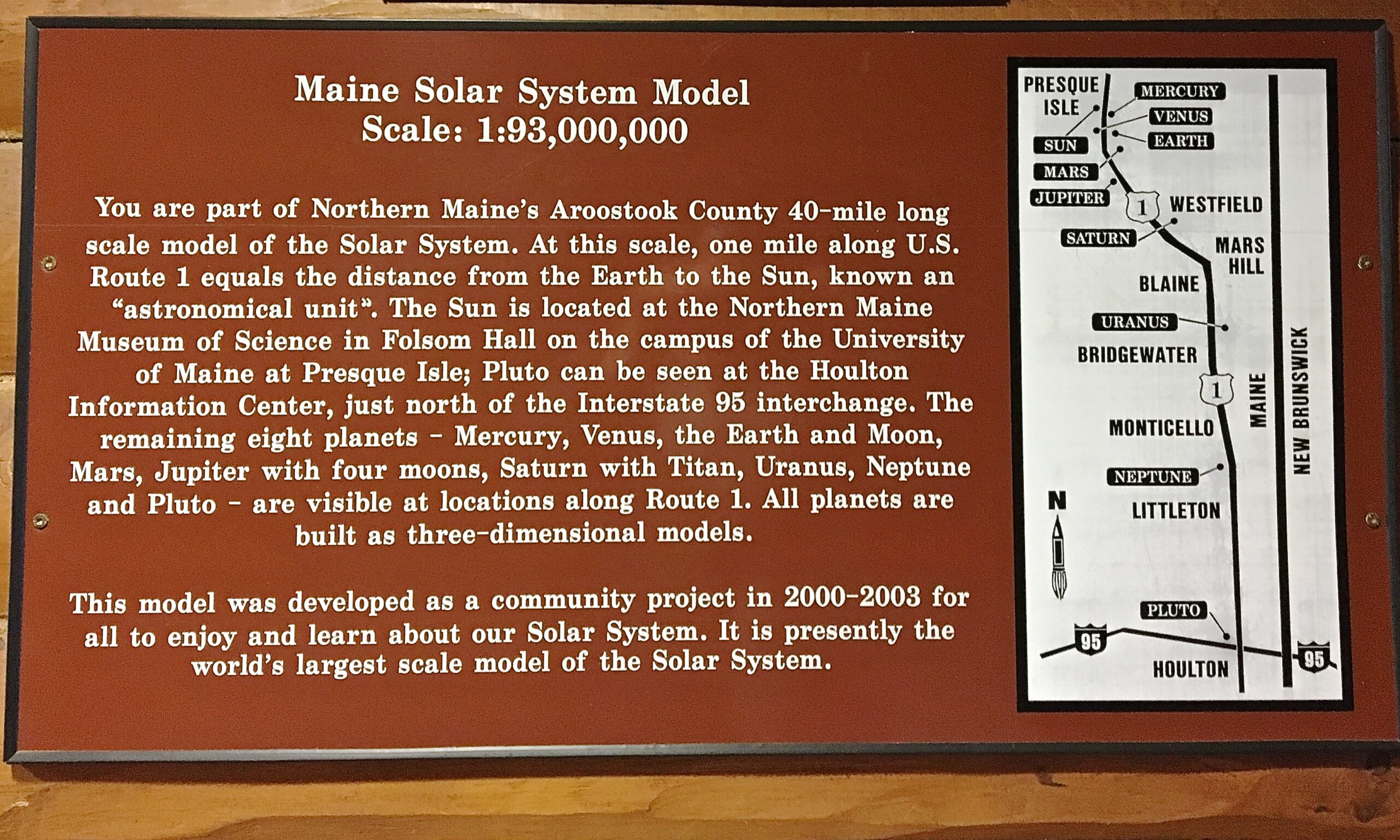
PRESQUE ISLE, Maine — After sharing plans this summer for the addition of a 3-D Sun to the Maine Solar System Model, University of Maine at Presque Isle officials are pleased to announce that its finalized location will be in front of Preble Hall, in the grassy area between the UMPI sign and flagpole. This will allow the largest object within the solar system model to be viewable from U.S. Route 1 — like the other 3-D celestial bodies located along the highway between Presque Isle and Topsfield — and will provide convenient parking for campus visitors.
The present Sun model is located inside Folsom Hall, painted on the interior walls of the first through third floors and with a leading edge that extends down the entrance stairwell. Its interior location and 2-D structure have been longtime disadvantages for those trying to find the model; in fact, one of the most asked questions by campus visitors is “Where is the Sun?”
“Our first announcement about the outdoor 3-D Sun brought much interest, but also requests to make the sun easier to find by being viewable from Route 1,” Dr. Kevin McCartney, recently retired UMPI professor of geology, Maine Solar System Model coordinator, and fundraising lead, said. “The Maine Solar System Model brings a great many tourists and is thus important for economic development to the County, and is also an important education tool for northern Maine.”
The Maine Solar System — the largest scale model of the solar system in the western hemisphere, and the second largest such model in the world — stretches for nearly 100 miles along U.S. Route 1. The model, which celebrates its 20th anniversary this year, features nine planets (including Pluto, which was a planet when the model was first established), three dwarf planets (including Pluto, based on its current status and present location closer to the Sun), and seven associated large moons at Earth, Jupiter, Saturn, and Pluto. Other dwarf planets, to be located north of the Sun at Lille and Madawaska, are planned.
At its new location, the three-dimensional Sun model will face south with a quarter-circle base and a 23-foot radius. Four nearly 40-foot-long arches will extend from the top of a 23-foot-tall post to the margins of the base. The project cost is estimated at about $55,000.
“This is the largest installation we’ve ever undertaken in the Maine Solar System Model’s 20-year history, but it will require considerable community support to make it a reality,“ McCartney said. “Anyone with a connection to the model — whether you’ve explored it with family and friends or during school trips, or merely driven by and appreciated one of the County’s biggest tourist attractions — please consider making a donation to our Fund the Sun effort.”
The project is approved for construction once funds are raised. McCartney said his goal is to raise funds quickly enough so the model can be up in time for the April 8 solar eclipse. Donations to fund the sun can be made online at www.umpi.edu/sungift or by mailing a check made payable to UMPI, c/o Dr. Debbie Roark, UMPI Office of Advancement, 181 Main St., Presque Isle, ME 04769.
Established by UMPI and the northern Maine community, the Maine Solar System Model was built entirely by volunteers, with all materials and labor donated. This larger-than-life community project involved a consortium of 12 schools and more than 700 businesses and individuals throughout northern Maine. Dedicated in 2003, this three-dimensional model is presented at a scale of one mile equaling one astronomical unit. One AU is the distance from the Earth to the sun, or 93,000,000 miles, meaning a person traveling at seven miles an hour alongside the model would be moving at the speed of light. The Maine Solar System Model combines the fun of a scavenger hunt with a science education experience like no other — the chance to witness the sheer expanse of the solar system by driving it mile by mile.







